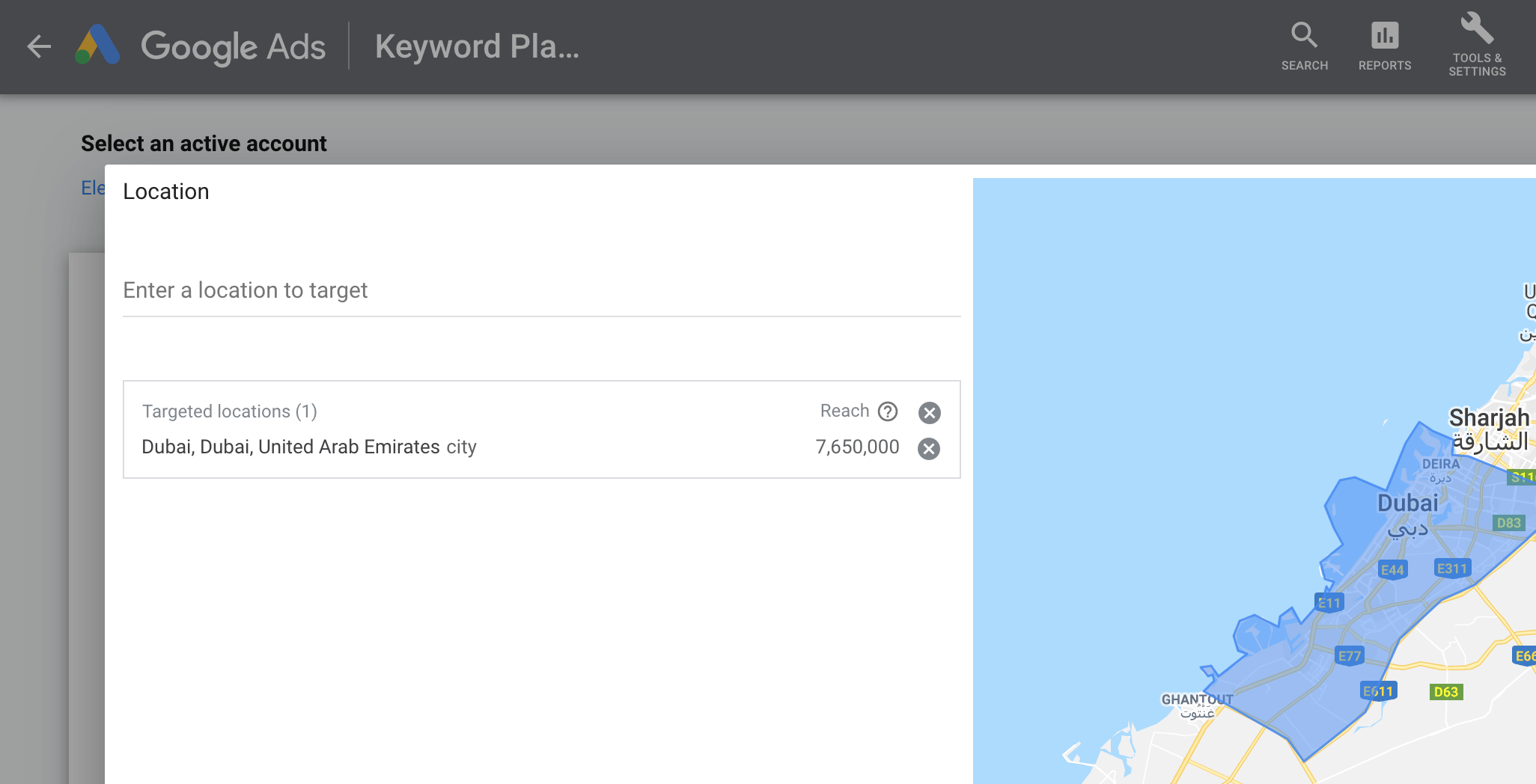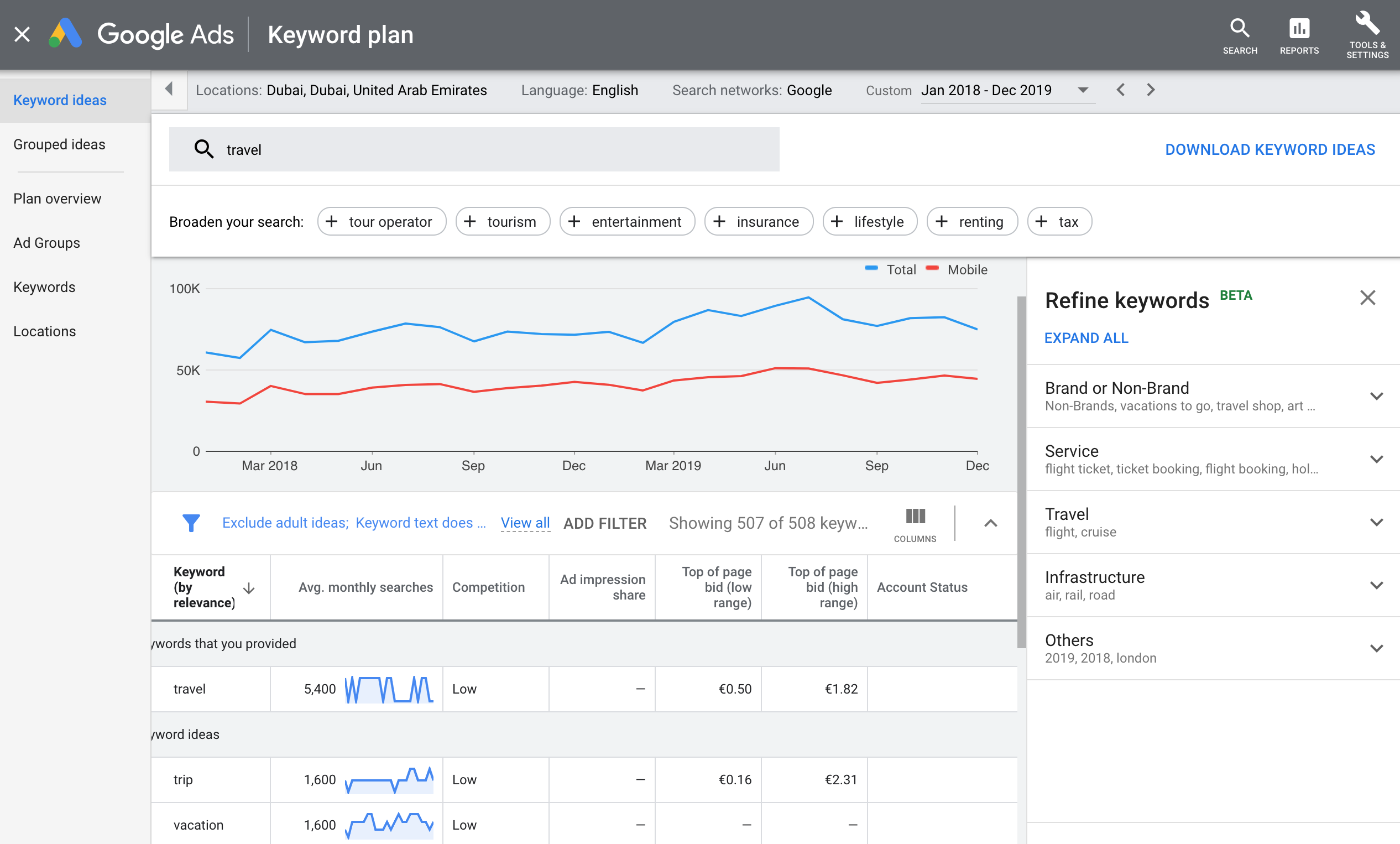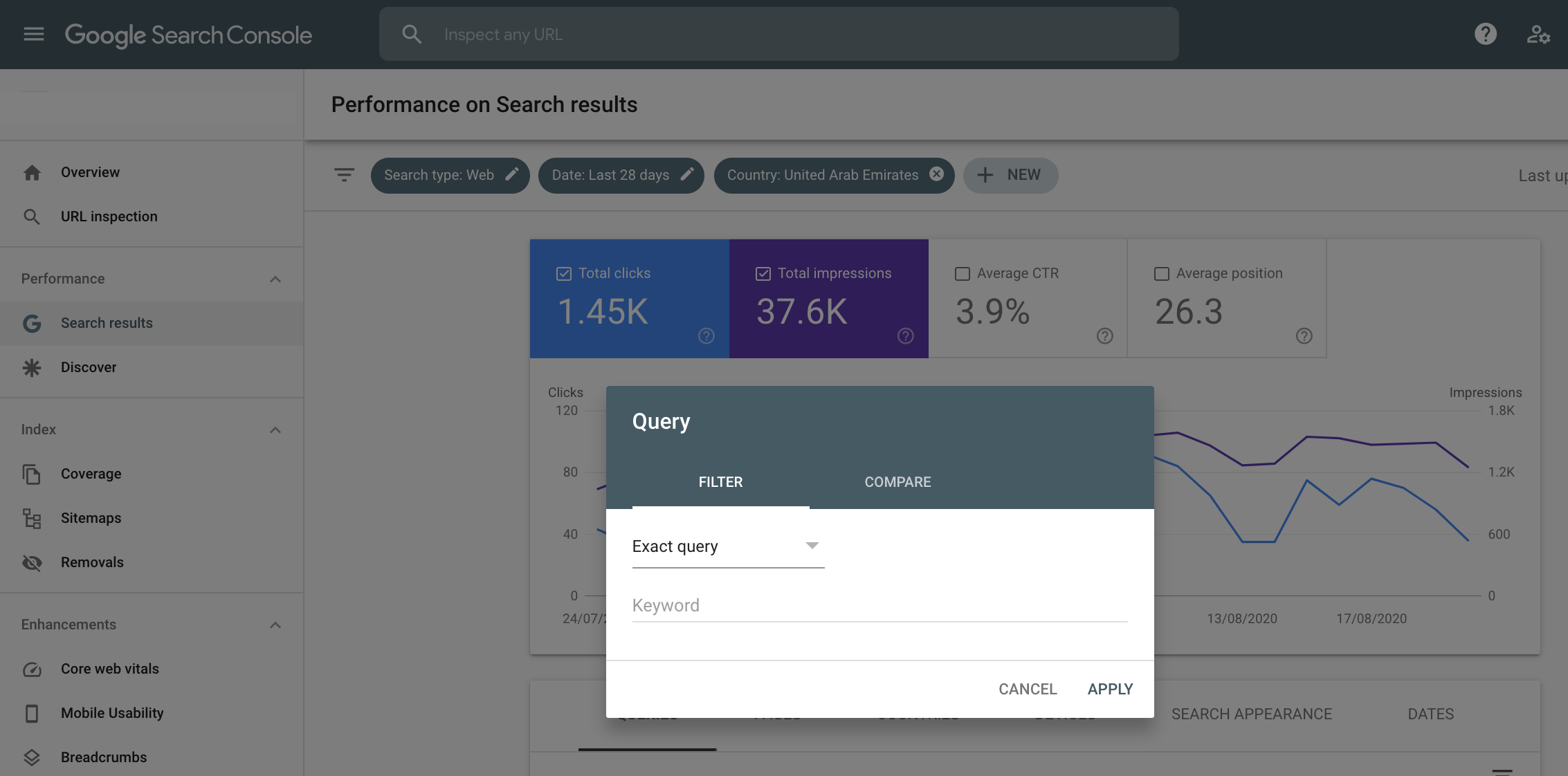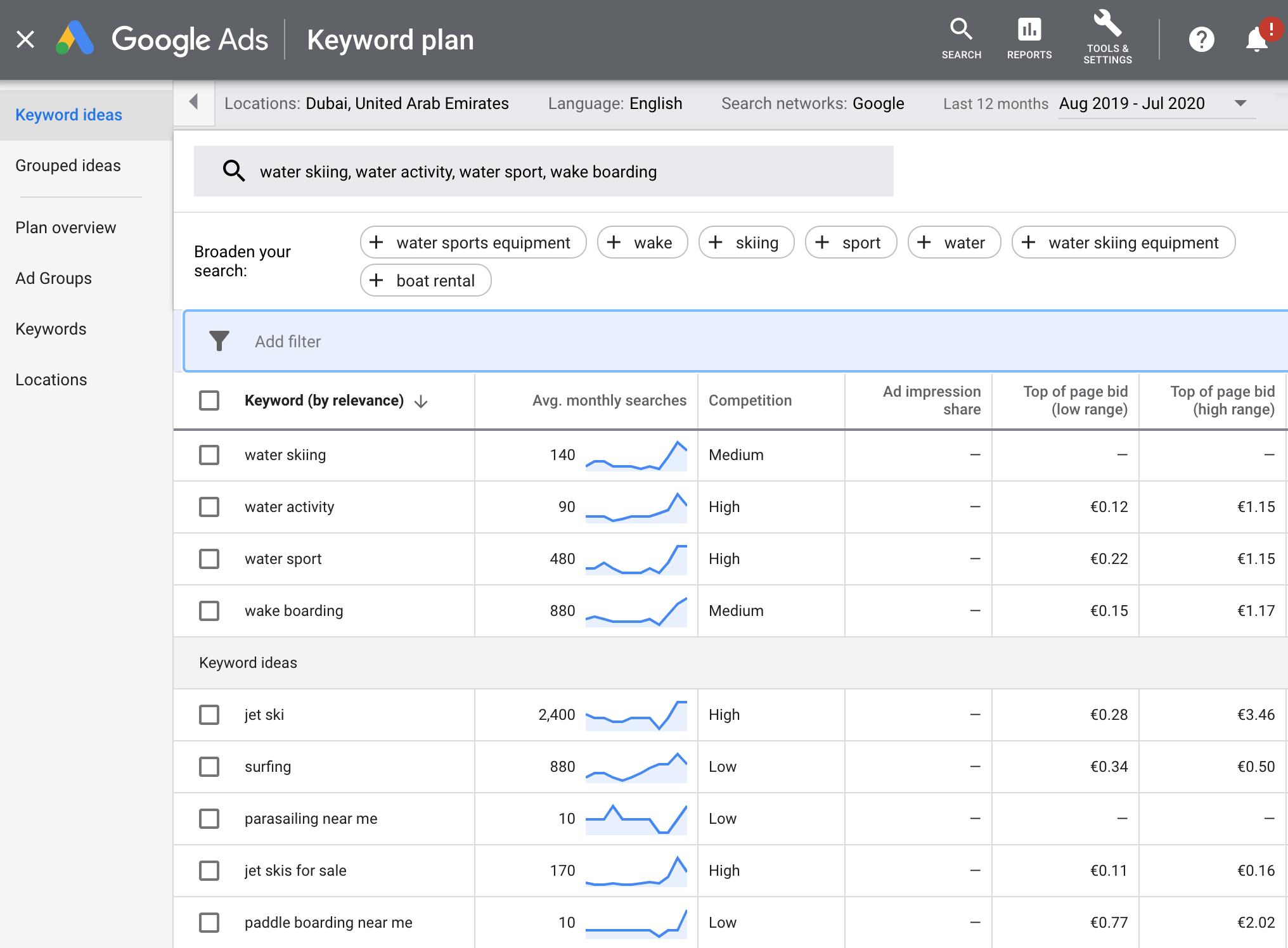
SEO in Dubai Guide
If you’d like to rank higher in search engines and you’re targeting or based in Dubai, there are a couple of things to keep in mind. For example, it’s expected that companies are offering, at minimum, an Arabic and English version of their website. Also, Dubai is a hub for companies operating in the Middle East. Most significantly, for enterprise companies with a separate website per country, certain technical settings need to be correctly implemented to make sure each site ranks in each region. Before diving into this, let’s explore more info about SEO and why it’s important.
What is SEO?
SEO stands for Search Engine Optimization and is part of the digital marketing mix. With SEO, we optimize websites to attract ‘free’ traffic to our websites, and more traffic means more sales. ‘Free’ is relative here as we don’t pay search engines like Google and Bing for this traffic, but we do need to work on our sites continuously to make sure we’re generating good rankings and maintaining those.
Why is SEO Important?
SEO is a way of generating free traffic. As such, it usually accounts for around 30 to 70 percent of the traffic on a site. If a company is also using paid search, this percentage is lower, but it still makes up for 30 to 50 percent of the traffic. Therefore, SEO is a channel that should receive dedicated attention if you want to get the best out of it. The general rule of thumb is traffic x conversion rate = sales. So, by increasing your traffic, you’ll experience an increase in sales – or any business objective you’re trying to achieve with your site.
Search Engines in the UAE
Although there are multiple search engines, such as Google, Bing, Yahoo, Naver, and Yandex, Google has a 97 percent market share in the United Arab Emirates. Therefore, when we’re optimizing for the UAE, we’re mainly referring and deferring to Google.
Google is also the strictest search engine, so if you have a good ranking in Google, you usually have a similar or better ranking in search engines like Bing and Yahoo. One small note to be made here is that Google is better at indexing JavaScript than Bing and Yahoo. So if your website has text blocks fading in, or other instances where content is only visible when JavaScript is disabled, you’ll may have poor performance in Bing and Yahoo.
SEO vs Paid Search
The other side of SEO is paid search or search engine advertising (SEM). Instead of generating free traffic, you can advertise using keywords you want to rank for. The advantage of paid search is that as soon as you activate your ads, you’ll be visible and generate traffic. The downside is that is can be quite expensive, and as soon as you pause your campaigns, that traffic will also stop.
Both channels can work closely together. For example, if you don’t rank well yet for SEO, you can be visible via paid search. Or, if you see that certain Calls to Action (CTAs) in your ads are working well, you can use them in the meta descriptions on your website to improve the Click Through Rate (CTR) from Google’s search results.
Paid search works as an auction model. That means the more competitors who bid on the same keywords, the higher the price goes. Therefore, over the years, costs-per-click have risen as more competitors use paid search to boost their sales. The advantage for the Middle East market is that the competition is not as high and advanced yet compared to Europe or the United States. As a result, combining SEO and paid search can be an effective strategy to increase revenue.
The Three Pillars of SEO
SEO consists of three pillars: content, technical, and link building/outreach. Content comprises the pages on the websites, and if you’re providing relevant, useful information to your visitors. Technical relates to items such as how fast the website loads and if search engines can crawl and index your pages. Link building is an activity to increase the number of external sources that are linking to your website. The more websites that link to your site, the more authoritative the website seems to Google. We prefer to use the term outreach, though, as link building is often related to low-quality SEO – more on this below.
Content
The work that falls under the content pillar mainly identifies what your potential customers are looking for and creating content to target these needs. Of course, all content should be relevant and aligned with your business goals.
Keyword Research
There are several tools available to help you perform keyword research, including the Keyword Planner from Google. These kinds of tools provide insights on how often a specific topic or keyword is searched per month. With Google’s Keyword Planner, you’ll able to filter for Dubai to see only the keywords and monthly search volumes for Dubai.

The keyword planner shows the most popular keywords, as well as their search volume per month. This helps to identify such trends as ‘travel,’ which indicates a slight increase in the summer months in Dubai, providing useful input for strategic planning and your content calendar, both for the site and social media.

As the keywords differ per language, it’s essential to do this exercise both in English and Arabic if you’re offering your site in both languages. Also, suppose you’re targeting the whole Middle East with a single site instead of separate websites or subfolders per country. In that case, we recommend adding these countries to the location settings to see the combined search volume across the region.
Keyword Mapping
When you have an overview of good keywords to go after, the next step is content mapping. This exercise identifies whether there is a relevant page on the website, or if a new one should be created. If you have a relevant page on the site, check its current ranking to see if optimization is needed.
Check Current Rankings
A free way to check your current rankings is via Google Search Console. To obtain an accurate ranking, select the United Arab Emirates as a country filter, and change the date range to the last 28 days. By using these filters, you will get the average position for the keywords for which your site was visible in the UAE. Next, filter on Query and change the filter to ‘Exact Query.’ Then fill in the keyword for which you want to know the ranking. If you don’t get any results and the keyword has search volume, it means you’re not ranking for this keyword.

If you have a large set of keywords, it’s easier to use a keyword tool such as MOZ. When creating your account, you can upload all your keywords at one time and will usually get the rankings in a day.
On-Page Optimization
If you have a relevant page online, but it’s not ranking, work is needed to optimize it. Usually, if a page does not rank and the topic does have search volume, it’s due to the lack of relevant content. In reviewing your page, try to expand the content to provide more information to the visitor. Think about what you can do to make the page more appealing. Look at the sites which are currently ranking in the top three. What do they do better than your site does? Research also in the USA, as that market is more advanced than the UAE. You might get some interesting ideas about how to add more value to your pages.
After you have expanded the content of the page, also look into items such as meta title, meta description, H1, other headings, keyword usage, image file names and alt tags, bearing these thoughts in mind:
- The main keyword should be in the meta title, preferably at the beginning.
- The meta description keywords are not a ranking factor, but the CTR from Google’s search results page is. Therefore, it’s a best practice to make the meta description descriptive as to what the user can expect while inviting the user to click on your website.
- The main keyword should be used in the H1.
- The main keyword or supporting keywords could be used in the other headings where appropriate. Make sure the page looks appealing and not over-optimized.
- Use the main and supporting keywords in the text, but make sure the text reads naturally and is not over-optimized. Google will understand where the page is about, and you want to make sure the visitor is engaged with your content instead of falling over the words.
- Use descriptive image file names and image alt tags that are relevant to the image.
Content Creation
When you’re about to create a new article, make sure you have a good understanding of what consumers are interested in reading. Research questions around the topic and check supporting or related keywords. If you’d like to create a page around ‘what to do in Dubai,’ for example, Google Keyword Planner gives you related topics if there is enough search volume. The UAE is a much smaller market than the USA, so keep in mind that the search volumes will be a lot lower than you might be used to seeing for other areas. After you create the page, make sure it’s supported with visuals, such as images and video, to create a as appealing a page as possible.

Technical SEO
If you have your headquarters or regional offices in Dubai, and targeting the whole Middle East with a separate website per country, technical SEO should not be overlooked. In addition to regular technical SEO activities, such as enabling a fast-loading website, make sure Google can access your pages, and the website is functioning without any errors. Hreflang tags are a necessity when operating in multiple markets in the same language.
Domain Setup
When you’re targeting multiple Middle East countries with a personalized version of the site for each country, there are two preferred ways to set up the domain:
• Separate websites with a country code top-level domain (ccTLD), such as example.ae or example.sa. By taking this approach, it’s a clear indicator to Google – as well as users – that the website is meant for their specific country.
• One website with folders per country-language combination (example.com/ae-ar/ and example.com/sa-ar/). By doing it this way, you’re building one strong site instead of many separate websites that need to build up their own authority.
Localize The Site
Once each country has its own site or subfolder, then localize the content towards each country by:
- Using local words in case they differ across the region.
- Use local currency.
- Provide local contact details.
- Make sure the site is in line with local regulations.
In so doing, you give the user the feeling that they are visiting a local site, a site from their country. This increases trust and has a positive impact on conversion rates.
Hreflang Tags
If similar pages are available in the same language across the same or different sites but targeting several countries, it’s essential to implement hreflang tags. These are tags that specify which version of the page needs to rank in which market. Without these tags, Google would see similar pages as duplicate content, and only one version would rank. For example, if you have a page in Arabic for the UAE and the same page in Arabic for Saudi Arabia, only one of them will rank, usually the one with the strongest authority. With hreflang tags, this issue is resolved as Google knows which page to show in what country.
Hreflang tags can be quite a hassle and a complicated process to generate as they only work when countries are referring to each other. The page in the UAE needs to refer to the similar pages in Saudi Arabia, Kuwait, Bahrain, etc., and the pages in those markets need to refer back to the UAE and the other markets. It’s only when the hreflang tags refer to each other that Google knows that the hreflang is correct and will then use this as input to show the right page in each market.
Page Speed
Page speed is an important ranking factor as it’s disturbing to users if they need to wait too long for a page to load. The slower the site, the higher the bounce rate – in other words, when users are closing the browser before they see your site’s content. Although the UAE has the fastest internet in the Gulf region, other Middle East countries, such as Iraq, Egypt, and Lebanon, have slower internet. Keep this in mind when developing your site. Don’t slow it down with too many moving elements.
Google recommends that the “Time to Interactive” is under two seconds. The Time to Interactive metric measures the time a page takes before the user can interact with it. It’s perfectly fine if content lower on the page are loaded in the background, as long as users can start consuming your content and interact with the site right away. This is especially critical for countries like Iraq, where the internet connection is not stable. Loading content in the background also enables visitors to continue reading in case their internet connection drops.
Link Building/Outreach
Link building is the dark side of SEO and easily the least fulfilling activity. Link building is the process of generating backlinks to your website to achieve higher rankings. The more incoming links you have, the more influential the website appears to the search engines, thereby representing stronger site authority. Links have a significant impact on your rank, but at the same time, they can harm your site’s performance if done in a low-quality manner.
Google’s Take on Link Building
Any links intended to manipulate PageRank or a site’s ranking in Google search results may be considered part of a link scheme and a violation of Google’s Webmaster Guidelines. This includes any behavior that manipulates links to your site or outgoing links from your site.
The ideal process would be to generate in-depth quality content that provides value to users. Make your website stand out as the best in its category. If other sites are aware of your content, they will be more likely to link back to it – not because you asked, but because your content might be interesting to their visitors.
Reaching Out to Potential Customers
To make other sites aware of your content, it’s important to share on social channels like Facebook, Instagram, and LinkedIn, but this in itself might not be enough. To support this process, reach out to relevant websites where your target audience is present. Apprise the site editors that you have certain content available on your website that might be relevant for their readers.
Outreach vs Link Building
As the link building process is more concerned with reaching out to potential customers on other sites, we prefer to use the term ‘outreach’ rather than link building. The term ‘link building’ has developed a negative connotation because of all the spam and low-quality link building activities happening on the web today. When reaching out to other websites and creating content for those sites to promote your services, make sure you stay within Google’s guidelines.
Investment in Time
Outreach might not be the most fun activity in SEO, but it’s part of the process. With regard to content and technical SEO, you decide the goals and take the necessary actions to implement those things. You’re therefore able to show progress on activities within the timeframe you had in mind. With outreach, you must depend on the managers of other websites and whether they find your content interesting enough to place it.
User Experience
Over the years, Google has made continuous changes to their algorithms to improve the user experience. Examples include ranking factors related to page speed, the readability of text, the page’s appeal, and the bounce rate from Google’s results page. Therefore, with any optimization, be sure to make the user experience your first priority, and ensure any solution you implement works for SEO as well.
Questions About International SEO
International SEO is the process of optimizing your website so that search engines, like Google, can quickly identify which countries you’re targeting and what languages you use on your site. The activities described above all fall under the banner of international SEO. They can be applied to almost all companies based in Dubai because of its bilingual nature and because many enterprise companies are regionally headquartered in Dubai. If you have any questions about international SEO, need support, or just want a second opinion, please reach out. We’re always happy to help.
Who We Are
Digital Rescue Rangers is a global digital marketing company with strong expertise in international SEO. The company was founded by Miranda Gahrmann, who started in SEO in 2008 and has lived in Dubai for the last five years, during which time she has worked for clients such as RTA, One & Only Resorts, Abdul Latif Jameel, and Red Bull. The Digital Rescue Rangers team operates worldwide, and has had the honor to work for enterprise companies that include Philips, Randstad, McAfee, and Telenor, for which we created some pretty awesome results.